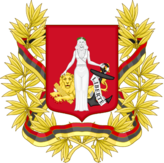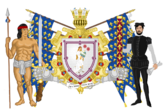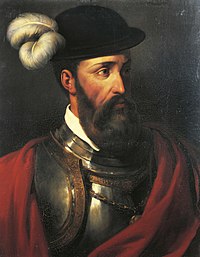Gaullica-Satucin relations: Difference between revisions
| Line 113: | Line 113: | ||
* Colonial Wars, setting up of rival colonies that are destroyed, interactions with the natives, etc. | * Colonial Wars, setting up of rival colonies that are destroyed, interactions with the natives, etc. | ||
=== The Dominion of Satucin (1846 - 1936) === | === The Dominion of Satucin (1846 - 1935) === | ||
=== Post-independence (1936 - ) === | |||
== Culture == | == Culture == | ||
Revision as of 14:34, 9 May 2021
This article is incomplete because it is pending further input from participants, or it is a work-in-progress by one author. Please comment on this article's talk page to share your input, comments and questions. Note: To contribute to this article, you may need to seek help from the author(s) of this page. |
 | |
Gaullica |
Satucin |
|---|---|
| Diplomatic mission | |
| Gaullican Embassy, Gatôn | Satucinais Embassy, Verlois |
| Envoy | |
| Ambassador Abraham Calvet | Ambassador Estelle Favre |
Gaullica-Satucin relations (Gaullican: Relations entre la République gaulloise et l'Union des Satucins) are the bilateral relations between the Republic of Gaullica and the Union of Satucin. The history of both countries began with the declaration by Pierre Avenard of his claiming of the land of the Sythes river basin for the Gaullican Empire in June of 1539.
Relations between the natives and the Gaullican crown were largely up to the governing of the six established viceroyalties, and the relations between themselves and the crown were as equally as varied and subject to change throughout the centuries. Relations were tumultuous during the period in which the Gaullicans aimed at outlawing slavery in their colonies, and were only resolved by the colonial unification of Satucin in 1846.
From unification until the end of the Great War, Satucin was one of two Dominions in the Gaullican Empire (the other being Cassier) and was granted independence from Gaullica at the conclusion of the war. Since independence, Gaullica and Satucin have had a healthy relationship based on their historic, cultural and linguistic ties.
Country comparison
| Flag | 
| |
| Coat of Arms | 
|

|
| Anthem | Chant des Gaullois | Allons Armée Catholique |
| Capital city | Verlois | Gatôn |
| Largest city | Verlois – 8,781,017 | Gatôn – 10,340,927 |
| Established | September 6, 1936 | April 5 1939 |
| Government | Federal semi-presidential republic | Federal constitutional monarchy |
| First leader | Albert Montecardé | Cyrile Montecardé |
| Current leader | Monique Degar-Abdulrashid | Théodore I |
| Main language | Gaullican | Gaullican |
| Main religions | 88.1% Solarian Catholic 2.8% No religion 2.2% Other Sotirian 1.3% Atudite 1.3% Irfan 4.3% Other |
68.4% Solarian Catholic 1.3% No religion 23.2% Other Sotirian 0.3% Atudite 0.8% Irfan 6.3% Other |
| Area | 786,321 km2 (303,600 sq mi) | 3,022,226 km2 (1,166,888 sq mi) |
| Population | 87,176,289 | 201,105,368 |
| Population density | 110/km2 (284.9/mi2) | 75/km2 (194.2/mi2) |
| GDP (nominal) | $3.377 trillion | $1.690 trillion |
| GDP (nominal) per capita | $38,738 | $13,514 |
| GDP (PPP) | $4.221 trillion | $2.683 trillion |
| GDP (PPP) per capita | $46,485 | $21,451 |
Historical relations
Colonial Era (1539 - 1846)

In late 1537 Pierre Avenard began his venture from Maredoux to Port de la Sainte on the Arucian island of Sainte-Chloé, taking with him six ships. He arrived by mid 1538, where he spent much of the time at port retaining supplies and undergoing numerous ventures and explorations across the Arucian. By April of 1539, Avenard began launching expeditions along the coast of Asteria Inferior. He left one ship to set up the fort known as La Porte on the westernmost island of Parane, where it still stands today, and began sailing in a southwards direction.
Arriving at the Sythes river basin on the 24th of June, Avenard and his men disembarked from their ships by way of rowboats towards the banks of the Sythes and upon landing declared the land property of the Emperor in Verlois. With further supplies arriving by way of Sainte-Chloé, settlement of the coast of Satucin began in earnest by the proclamation of Francois I, dividing the newly charted land into six viceroyalties. The territory however was vast, unexplored and unclaimed at this point with only one viceroy, Avenard being declared the Viceroy of Pasau with this declaration.
The Gaullicans would encounter various indigenous peoples who likely spoke related Ngu languages, especially as they began to venture up the coast and up the Sythes river. Relations between the Gaullicans and the natives varied tremendously on the indigenous group involved: some were retained as guides and trade was established between them. However several native peoples were sent back to the Arucian colonies as slaves following skirmishes on the river and across the new settlements. Others still were wiped out by both disease and force of arms in the clearing of coastal areas for Euclean settlement.
What would become Satucin became a legend in Gaullica and in Euclea; the reports from Avenard's expedition spoke of an "immense wilderness and countless creatures never before seen." Indeed, Avenard's accounts are the first Euclean records of: jaguars, piranha, sloths and what he described as 'magic frogs that kill by touch'.
Avenard's exploits, discoveries and rumours -- including that of a legendary city of silver that the Sythes flowed through -- caught the attention of other Euclean powers and explorers. Gaullcia became embroiled in an economic competition with other maritime powers, wrestling for control and colonial of the Satucine coast for much of the remainder of the 16th and early 17th century.
- Colonial Wars, setting up of rival colonies that are destroyed, interactions with the natives, etc.
The Dominion of Satucin (1846 - 1935)
Post-independence (1936 - )
Culture
Film
Literature
Music
Economic cooperation
Trade
Military cooperation
Resident diplomatic missions
Gaullican missions in Satucin
- Gatôn (embassy)
- Pasau (consulate-general)
- Satau (consulate-general)
- Bonhavre (consulate)
Satucinais missions in Gaullica
- Verlois (embassy)
- Rayenne (consulate-general)
- Saint-Thomas (consulate)